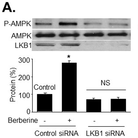 A cancer journal has retracted a 2014 paper after discovering one image had been duplicated in seven other papers. That’s right—the same image appeared in a total of eight papers.
A cancer journal has retracted a 2014 paper after discovering one image had been duplicated in seven other papers. That’s right—the same image appeared in a total of eight papers.
For some of the papers, the issues went beyond the single image. According to the retraction notice, several papers contained other duplicated images, as well as “overlapping text.” The notice, published in October 2017 in Asian Pacific Journal of Cancer Prevention (APJCP), is essentially a letter PLOS ONE wrote to several journals, informing them of the issues in the eight papers, all published between 2014 and 2016. The letter mentions that one of the papers—a 2016 analysis in Korean Journal of Physiology (KJPP)—had already been retracted earlier this year. One author of the retracted KJPP paper confessed to using a company to prepare and submit the manuscript.
A PLOS spokesperson told us that the journal first learned of the problematic papers from KJPP.
In January 2017, the editors-in-chief of KJPP, Tong Mook Kang and Hunjoo Ha, emailed PLOS and two other journals—Brain Injury and Experimental and Molecular Pathology—to inform them of the duplication. Kang explained that a reader had notified KJPP about the issue.
According to Kang, the KJPP paper, which the journal retracted in February 2017, was “almost identical” to the 2015 paper in Brain Injury and the 2014 paper in Experimental and Molecular Pathology. The papers share a corresponding author, Zhan Liu, based at People’s Hospital of Hunan Province in China.
Kang explained that the original version of the KJPP paper also designated Zhan Liu as corresponding author, but during the review process, the title and authors of the manuscript “completely changed,” and now list Bo Liu and Min Hu as authors. (The names Bo Liu and Min Hu are included as authors on one of the eight papers that published the same image —a 2016 article in Clinical and Experimental Hypertension.)
When PLOS investigated the matter further, it concluded that the duplication affected four other papers, each appearing in a different journal—APJCP, Gastroenterology and Hepatology, Acta Pharmacologica Sinica, Clinical and Experimental Hypertension. A spokesperson for PLOS says the journal “is currently processing a retraction” for the 2014 paper, “Berberine Improves Kidney Function in Diabetic Mice via AMPK Activation.”
Here’s the image (Figure 2A in the PLOS paper):
We contacted the corresponding authors, all based in China; none responded to our requests for comment.
A paper mill?
Kang explained that Bo Liu—one of the authors of the KJPP paper, who works at the Third Xiangya Hospital in Changsha, China—admitted to “serious scientific misconduct” by using “an agency to write and submit this paper.”
Kang said he suspects that Bo Liu and many other scientists “bought a fabricated manuscript from commercial companies, and then spread it to many international Journals at the same time.”
PLOS also informed us that “an external biotechnology company conducted the Western blot experiments and provided the raw blots to the authors for the PLOS ONE paper.”
We asked PLOS if it found evidence of a paper mill. The spokesperson told us:
We do not have confirmed, conclusive evidence that a paper mill was involved. The authors confirmed that they outsourced Western blots to a named company, and they noted they did not obtain external assistance in preparing the manuscript.
According to PLOS, the duplicated text and images may have escaped detection because “some of the manuscripts were under consideration at overlapping times.”
Kang added that because there are currently “no sophisticated engines or tools to detect the image duplication,” the journal first checks all manuscripts for textual similarities using CrossRef. The journal then selects articles with “a higher similarity score or those with similar subjects or contents” and carefully scrutinizes and visually compares the “images one by one.” Several years ago, Kang says the journal could “easily detect the duplicated images” using this strategy, but it “is now getting harder and harder.”
Update, 1400 UTC, 12/29/17: On December 28, PLOS retracted the 2014 paper. Frequent tipster Rolf Degen alerted us to this retraction.
Like Retraction Watch? Consider making a tax-deductible contribution to support our growth. You can also follow us on Twitter, like us on Facebook, add us to your RSS reader, sign up on our homepage for an email every time there’s a new post, or subscribe to our daily digest. Click here to review our Comments Policy. For a sneak peek at what we’re working on, click here. If you have comments or feedback, you can reach us at [email protected].

No, seven! You mean “duplicated in seven papers”, of course. Duplication is the copying of an original. Thus, the original was duplicated seven times if there are only eight instances of the same image.
Yes, duplicate is to make a copy. However, in the present case, is it possible to know which article contains the original? If yes, the original image was indeed duplicated seven times. Otherwise, all copies have the same status, and it would be better to refer to an octuplicate. The noun is defined as “a set of eight like or identical things”:
https://en.wiktionary.org/wiki/octuplicate
That said, recycling of any size (see comment of WaterRose), if not clearly mentioned and/or referenced, is a potential misconduct.
Of course, it must be the first of the eight papers that contains the original (i.e., the first being the origo). One of the eight papers must antedate the next seven…
What, if the manuscript which they put first was published later than the other 7 duplications.
I would like to duplicate this comment in seven different threads.
Of course, re-cycling adds a cycle to the original cycle, so if recycle seven times, you end with eight cycles in total. It only goes to show that purists like RetractionWatch must be above reproach. After all, it is called ReTraction, meaning that it comes after Traction, just as reproach comes after approach.
“One image was duplicated in eight papers. Yes, eight. ”
It is called recycling.
How about “a single octaplication”?
Wouldn’t it be heptaplication then?
No: it’s a septuplicate, since the term is patterned from “duplicate”, which, in turn, is borrowed from Latin “duplicatus”. Note moreover that each paper should have a different copy (of the same image), so one article includes the duplicate, another one includes the triplicate, and so on. Finally the last one includes the seventh copy, which is the septuplicate.
Your terminological proposal fails to take account of the topology of the network of successive duplications (and even that topology doesn’t tell the whole story). At one extreme, it could be that all the images but the root of the tree were copied directly from that root (or, to add a wrinkle, from its unpublished source). At the other extreme, image A1 was copied directly from the root A0, A2 was copied form A1, …, and A6 was copied from A5. There are many other possibilities (further complicated by the time-ordering of the submissions, acceptances, and publications of the articles that use them). All (I think) we can be sure of is that the topology is a directed tree.